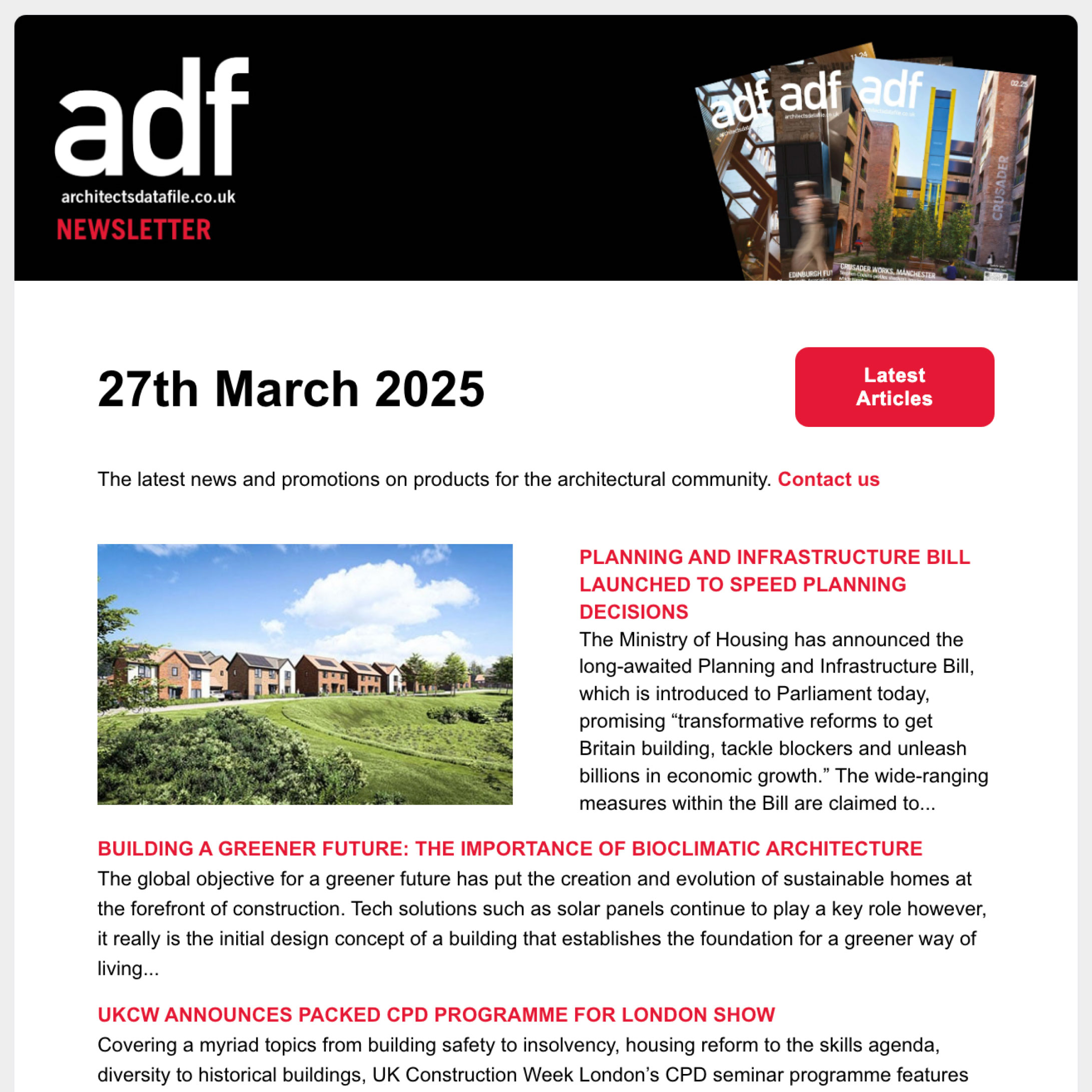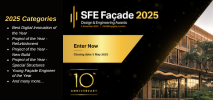ADF’s Kim Neville traces the evolution of multi-award winning Glasgow practice Holmes Miller, from its modest origins 70 years ago to overcoming a series of challenges which equipped it to deliver further future growth
Holmes Miller was established in 2011 following the merger of Holmes Partnership and The Miller Partnership, but its origins can be traced back more than 70 years.
The firm was initially founded in 1951 in Glasgow by Jack Holmes, who graduated from the Royal Technical College in 1940 before serving with distinction in the Highland Division of the Royal Engineers during World War II. After the war, Holmes oversaw the Hamburg City Architects Office for the army for two years before returning to Scotland to start his own practice.
In 1955, after Jack married architect and planner Kirsteen Borland they extended their relationship into their work, forming Jack Holmes & Partners, with Kirsteen as a partner. The firm became Holmes Partnership in 1981 with the introduction of a second generation of owners.
The firm’s headquarters are still in Glasgow but the business has continued to grow, broadening its reach by adding UK and international studios. “We have experienced significant growth since our humble beginnings,” reflects Callum Houston. Holmes Miller has an expanding presence in its St Albans studio, bringing the UK staff total to more than 70, and it has a studio in Guangzhou, China, increasing the overall headcount to nearly 100.
Aligned to its continued growth plans, the practice has also recently established a base in Leeds from where it will service clients and opportunities in the North of England. Reflecting on the past seven decades, Houston identifies some of the key challenges the firm has addressed. “Technological advancements, like the transition from manual drafting to CAD and the adoption of BIM, have completely transformed project design and management.” Holmes Miller, like many practices, has also navigated the complexities of fluctuating economic conditions and an ever-evolving regulatory landscape.
A significant focus for the company has been aligning its aims with the UK’s 2050 net zero ambitions, but investing in being ahead of the curve. “As the country moves towards net zero, designing sustainability has become increasingly crucial. However, by continuously learning and staying ahead of industry trends, we have consistently adapted and thrived.”
The firm’s culture has also evolved to foster greater collaboration and openness among its team. “Our management culture is characterised by openness and collaboration,” Houston asserts; “many senior team members have progressed through the ranks.” The design studios have been transformed from traditional private offices to a range of informal breakout spaces, actively promoting interaction and the exchange of ideas amongst members of staff.
Ethos in practice
Their ethos is to create an environment based on mutual respect, where “everyone is valued and actively encouraged to use their voice to help shape the most productive and supportive workplace.”
Their sector-specific teams (Holmes Miller has a strong track record in sport and leisure, health and wellbeing, justice, public buildings, residential, and education) share their experience and knowledge with staff through training and mentoring, ensuring the firm retains and passes on expertise.
More recently, the firm has made significant strides to align with causes and bodies that reflect its core values. Notably, a partnership with the Passivhaus Trust, which advocates for energy-efficient building practices and sustainable development, “marks a significant shift towards environmental activism,” says the firm.
Rather than following a distinct design signature, the practice adopts a “bespoke, people-focused” approach for each project to harmonise with the local community to help it feel organically integrated into its surroundings.
Exemplary
One of Holmes Miller’s standout sustainability-first projects is Scotland’s first Passivhaus leisure facility, the Blairgowrie Recreation Centre. The practice is acutely aware of greenwashing concerns and aims to put sustainability at the core of every project through a “dedicated sustainability charter” which incorporates user wellbeing goals.
Sciennes Primary School is Scotland’s first Passivhaus primary school, opened in Edinburgh in 2023 with a £3.2m CLT-constructed two-storey extension to the grade B-listed existing building in the Marchmont conservation area. It exemplifies a harmonious blend of sustainability and modern functionality, as detailed in a report in the January 2024 edition of ADF.
Holmes Miller aims to go beyond industry standards on sustainability, incorporating Passivhaus principles into designs “even when certification isn’t a project goal.” They developed an in-house tool for assessing embodied carbon, now used on all projects.
Other key recent projects include a pioneering prison, HMP & YOI Stirling, designed to focus on mental well-being and trauma-informed care which picked up a 2024 Scottish Design Award for its “innovative approach.” The Allander Leisure Centre, which opened in March 2023 in East Dunbartonshire is “another strong example of the practice’s understanding of the role public buildings play in fostering community cohesion and enhancing quality of life,” and places a focus on accessibility, inclusivity, and sustainability.
The firm says that having “passionate staff” leads to better outcomes, so they actively encourage their team to align their personal interests and strengths with project commitments. A great example is the Early Years Centres for East Dunbartonshire Council it has designed, with project lead Mark Ellson drawing inspiration from his experiences with his young family to create an enhanced secure play area. This space exceeded defined standards by 50% and has “ensured that children have a safe, active environment that caters to their developmental needs.”
Collaboration is vital for fostering an environment where ideas can flow freely, and Holmes Miller found this basic requirement of architecture tested post-pandemic, as “Teams calls can only go so far.” They believe nothing compares to the effectiveness of face-to-face interaction.
Holmes Miller introduced a nine-day, 72-hour working fortnight last year following an employee-led consultation. This offers a slight reduction in hours with no loss of pay, “resulting in more effective project collaboration, and a stronger office culture,” as well as a better work-life balance. The firm has also integrated remote working flexibility, “prioritising health, well-being, and performance.”
Although the firm has made numerous contributions to the built environment over its 70 years, Houston regards the introduction of the nine-day fortnight as one of its most significant milestones achieved to date.
Current challenges
Like many architectural firms, Holmes Miller faces several current challenges, including uncertainty in project pipelines, extended project durations, and pressures on client budgets. They are also contending with the rising costs of professional indemnity insurance, software, and general living expenses. Additionally, the firm is navigating increased demands for expanded sets of ‘deliverables’ and project scope, particularly regarding BIM, without corresponding fee increases.
In response to this, the firm is “focusing on enhancing efficiency and streamlining processes to deliver projects more effectively within budget constraints.” It says a key measure for achieving this is “emphasising clarity in project scopes from the outset, for mutual understanding of deliverables and expectations.”
The practice wants to offer its staff “fair compensation” for their work in a tough market, and has identified part of the means to this as “cultivating sustainable partnerships with clients who value their services,” in order to support both “creativity and business objectives.”
As well as contributing to tackling the carbon reduction challenge, Holmes Miller is “focusing on increasing their involvement in projects that positively impact society.” By collaborating closely with local communities, the firm aims to enhance well-being and quality of life through thoughtful, inclusive design.
These clear strategies show a commitment to pushing architectural boundaries while creating lasting value for clients and communities. It’s focused on driving positive change both in society and the environment for the next 70 years!





